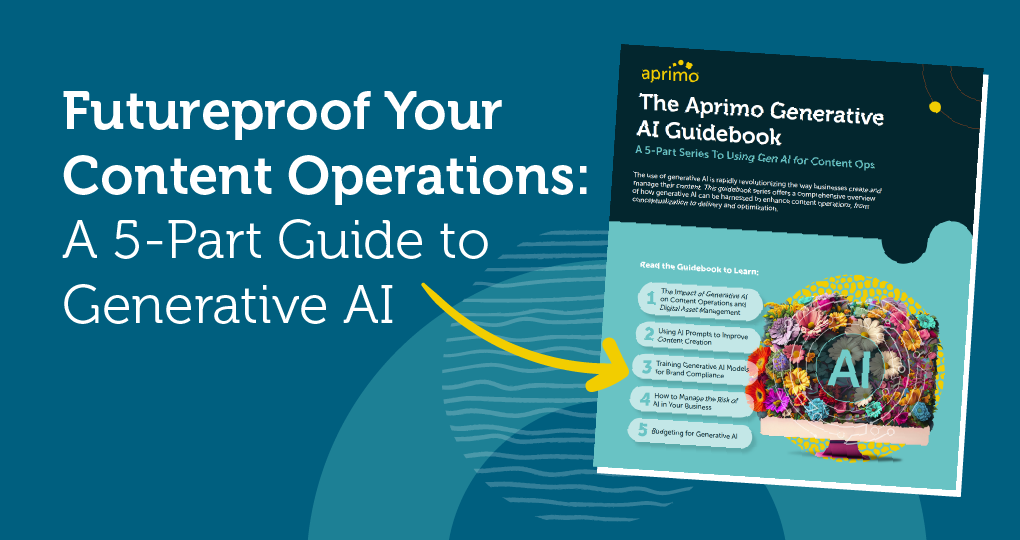DAM & MRM: From Assets to Campaigns

The B2B segment in the US alone spent over $7.5 billion on marketing tech in 2023. Marketing resource management (MRM) platforms fall into the marketing technology category. Businesses often use a fusion of MRM platforms and digital asset management (DAM) software to drive more conversions and streamline their marketing processes. An MRM solution allows businesses to consolidate their marketing resources, content, operations, processes, workflows, and analytics in one central location. On the other hand, a DAM platform is the repository for all digital assets, not merely the ones for marketing. Managing all business resources is imperative to achieve an efficient and well-coordinated marketing campaign. The intersection of MRM and DAM in marketing workflows facilitates faster and more effective management of assets across multiple channels, formats, campaigns, teams, and platforms. Below, we explain how these platforms can work in sync to drive successful campaigns.

Leveraging DAM for Effective Asset Management
The role of a digital asset management system in storing and managing digital assets is paramount. It provides a centralized storage point, a quick way to find assets, and a method of version control for all digital asset types.
One crucial role of DAM is to ensure the right people always have access to the latest approved version of an asset. You can set DAM systems with permissions for different levels of access, allowing only authorized team members to view or download certain assets.
Other benefits of centralized asset management in a DAM system are:
-
Streamlined Workflows: You can create workflows in DAM platforms to automate creating, reviewing, approving, distributing, and tracking digital assets.
-
Consistent Branding: You want all your digital assets to align with your brand guidelines. DAM helps ensure it. Efficient approval processes and workflows maintain brand consistency across all channels and campaigns.
-
Better Collaboration: It’s not just the assets in a DAM system — all team members are here, too. That makes collaboration a breeze.
MRM: Optimizing Marketing Resources
A marketing resource management platform is the unified space for the marketing team to manage marketing resources, including people, budgets, assets, and campaigns.
The main components of an MRM platform include:
-
Budgeting and planning: Marketers can create, manage, and track budgets for marketing activities through an MRM.
-
Project management: Many MRMs also have project management functionalities, such as task assignment, progress tracking, collaboration tools, etc.
-
Workflow automation: Like a DAM system, an MRM can automate workflows for marketing. For instance, you can automate the creation of a content piece for publishing and distribution.
-
Analytics and reporting: MRMs also have analytics and reporting capabilities, letting you track metrics and key performance indicators (KPIs).


Integrating DAM & MRM for Seamless Workflows
In many instances, the marriage of MRM and DAM can help optimize your marketing processes. The duo improves content production and distribution by offering marketers a powerful workflow orchestration tool.
Assessment of Current Systems
If you already have an MRM or DAM system, analyze both to understand their limitations and capabilities. Which pain points can a DAM-MRM integration solve? Which areas can it optimize? For instance, your MRM may not have approval automation features. Here, DAM can step in. Similarly, if the DAM doesn’t allow an audit of resource allocation, an MRM platform could fill this gap.
Seamless Asset Access for Campaigns
A synergy of a DAM platform and an MRM solution could also ease access to marketing campaign assets. Suppose you’re running a user-generated content (UGC) campaign that requires multiple assets for different platforms.
Your MRM platform may not be flexible enough to allow the categorization of asset storage for different platforms. You can resolve this issue by integrating DAM, which lets you store and access assets through meta-tags or content tags.
Improved Compliance
A common concern in marketing is compliance with brand guidelines. Marketers must also comply with legal and regulatory requirements in highly regulated industries. Integrating DAM and MRM assists in this regard. All the content approved by MRM goes into the DAM system for automated approvals. So, all content distributed through the DAM complies with the brand vision and regulatory guidelines.
From Assets to Campaigns: The Workflow Journey
The workflow journey involves many steps, from the creation of the first asset to the day you run the campaign.
Step 1: Conceptualization and Campaign Planning
In this step, you brainstorm ideas for the campaign and identify the required assets. If your MRM system has a feature to create project briefs, this is where you can use it to present your campaign concept and required assets.
Step 2: Asset Creation and Storage
Now, you start creating assets. Again, the MRM platform can prove handy by assigning tasks and deadlines to team members. The DAM platform can also store the created assets.
Step 3: Asset Approval
Once you’ve created all assets, an appropriate stakeholder will approve them. This is where DAM comes in. Depending on the structure of your organization, you can set up a workflow in DAM that automatically sends assets to the relevant stakeholders for review and approval.
Step 4: Asset Distribution
After approval, the assets can be exported from DAM to the MRM system for distribution. Or, you can use the built-in distribution capabilities of DAM to distribute content to relevant channels.
Step 5: Performance Tracking and Analysis
Both the DAM platform and the MRM software have analytics dashboards. You can monitor your campaign’s performance here.
Step 6: Asset Retrieval
At some point, you’ll need to reuse an asset. You may even need to repurpose it for a different campaign. Simply search for it in your DAM system and use it again. The tags and metadata you added during the asset creation phase will help you in this step.





